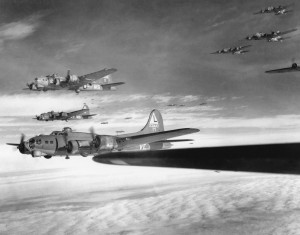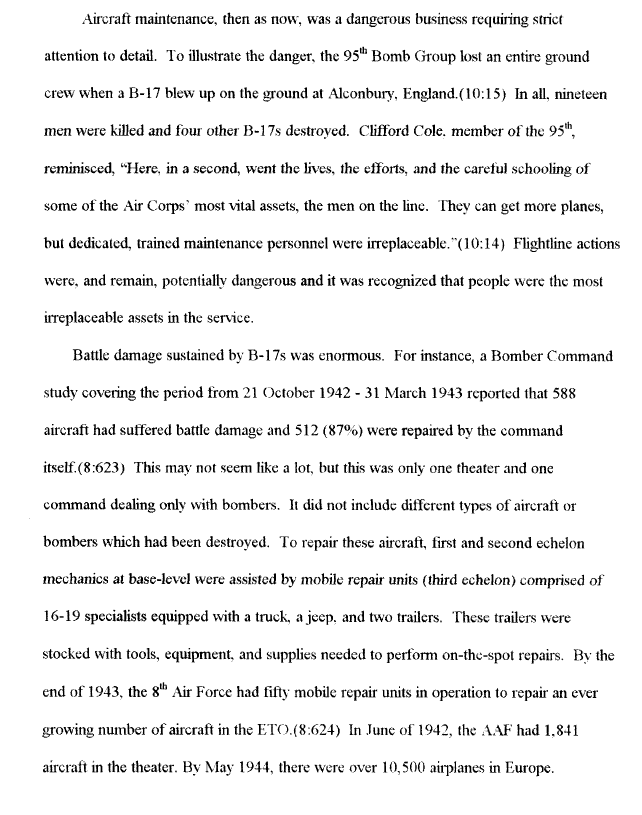2013-04-21 by Robbin Laird
In researching for my participation in this summer’s B-17 event in France, I have learned many things.
An interesting aspect of thinking about the B-17 as a fleet is the question of how it was supported or the logistics element.
I found this story on the Boeing website which provided perspective on what is was like then and what it is like now as seen from the logistics perspective.
According to Randy Jackson in his piece entitled: “Legend Aloft: How World War II B-17 Bombers Paved the Way for Modern Aircraft Logistics,” the point was underscored the difference between now and then with regard to the logistics approach.
Terry Langerman, Boeing Fleet Performance and Affordability director of C-17 Globemaster III Sustainment, said the speed of parts distribution that businesses like FedEx and UPS afford maintenance crews today is a far cry from what B-17 crews had to deal with during the war. It could take weeks, even months, before a critical part reached theater. Today, the C-17 team can predict the need for spares years in advance.
“During World War II, the U.S. Army transportation and logistics network relied primarily on ships to move supplies to ports in war zones and then onto forward supply bases by railroad and trucks,” Langerman explained. “In support of today’s global war on terrorism, we collect data for the C-17s throughout the entire supply chain and feed that information into a sophisticated supply chain modeling tool. We can forecast the spare parts we’ll need one to two years in advance so we can maximize aircraft availability and mission readiness.”
U.S. Army Air Corps predecessors never dreamed that someday one could access a computerized database a world away and digitally track and move parts into theaters of war at incredible speed. Officials with Boeing’s C-17 Product Support and Services division said the supply chains of today are far leaner than half a century ago. The Boeing C-17 Globemaster III Global Sustainment Partnership (GSP) has resulted in an average delivery rate of 82 percent at the base supply window for all parts and an average customer wait time of only three and a half days. Still, many of the support and supply chain methods perfected to keep the B-17s mission-ready laid the groundwork for future aircraft programs.
“We’ve learned a lot from the aircraft programs of our past,” said Rick Robinson, director of Product Support for Boeing Defense, Space & Security. “Because the B-17 was produced in such large quantities – with 12,731 sent into two theaters – and had 10 crew members requiring different skills, the B-17 essentially led us to new methods of defining and providing support that we use today in our current programs.”
Sean Downey, Boeing director of Maintenance and Modifications for C-17 GSP, agreed.
“The Boeing C-17 is obviously a very complex machine compared to the venerable B-17, but in many ways it’s very much the same,” said Downey. “As the historically premier large airframe producer for the U.S. and the world, we at Boeing have learned more about supporting these massive machines both militarily and commercially than anyone. We have been able to harness the good and bad of those first experiences and develop outstanding support concepts such as the C-17 GSP, F-18 First, and Gold Care for the Boeing 787 – all integrated logistics programs that ensure parts availability and total support to customers.”
It would be useful if today’s policymakers would learn from the transition from the B-17 to the C-17 and not pioneer a path backwards in attacking performance based-logistics systems, which are part of the way forward in shaping modern capabilities.
Much like you would not wish to ride the B-17 forward into combat to day, you would not simply wish to rely on government owned depots and transportation systems.
It is also useful to remember how important air superiority and maritime dominance are in moving parts throughout a global system.
For a look at the challenges of aircraft maintenance and the approach to training in World War Two with the Army Air Force see the following:



